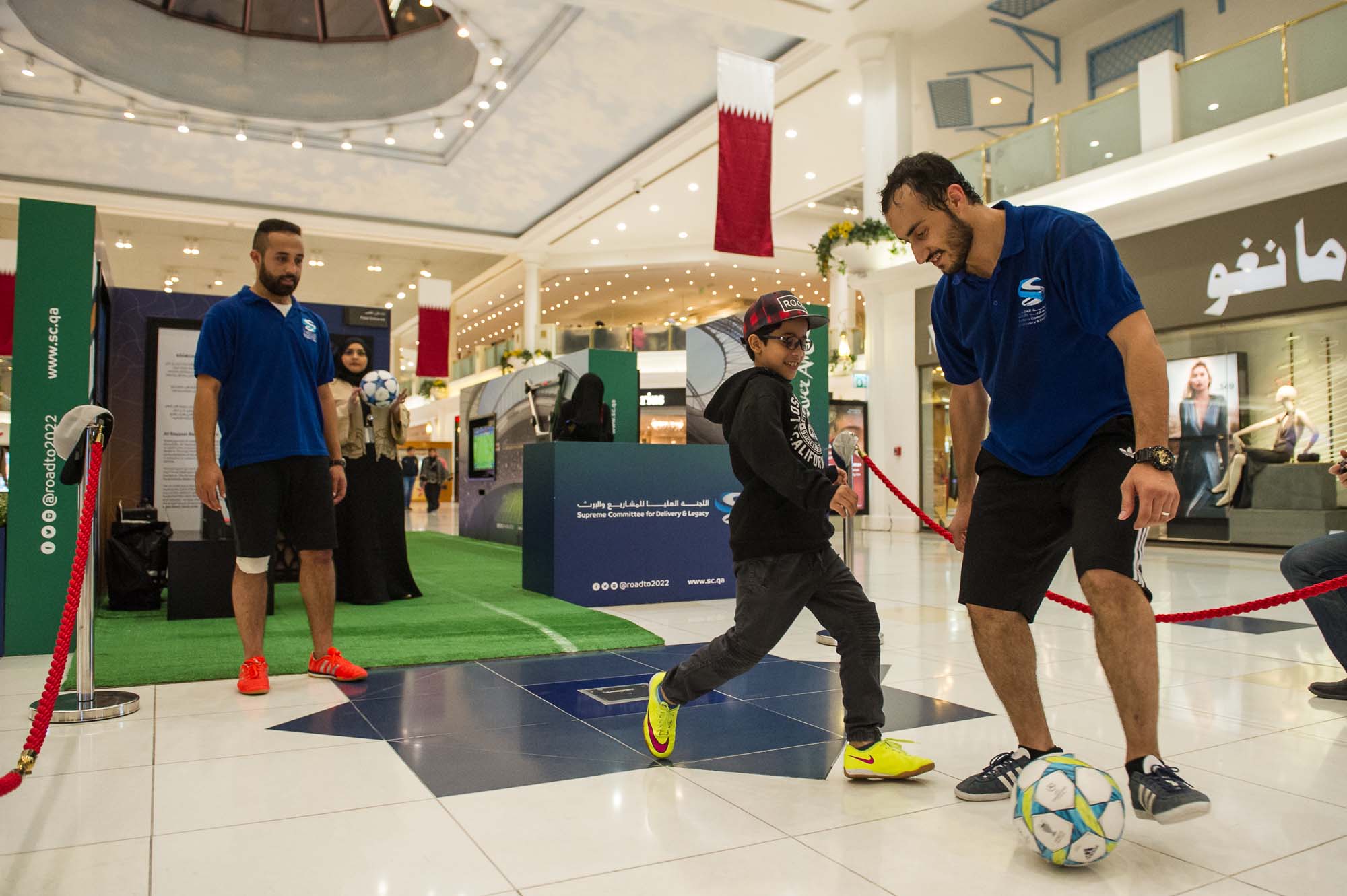
With the start of the 2022 World Cup less than seven years away, local organizers have begun working to drum up interest and enthusiasm for the tournament among Qatar residents.
The goal is to identify potential official and unofficial volunteers for the tournament, as well as collect ideas on how the World Cup can have a lasting legacy by, for example, redeveloping entire neighborhoods around the stadium sites.
The efforts also include teaching social media marketing lessons to select youth, who say they want to use those skills to dispel notions held by some foreign critics that Qatar is an unsuitable World Cup host.

“We can see how we can change people’s opinion about how it actually is. Through social media, we can prove how Qatar is actually handling things like it is supposed to and we can prove to the world that we deserve a chance,” Abdullah Yousef, a member of the Supreme Committee for Delivery and Legacy‘s (SCDL) youth panel, said in a statement.
The 35-member youth panel, compromising of students from across Qatar, have also received tours of stadium construction sites, Qatar’s anti-doping lab and Aspetar Hospital, which specializes in sports medicine.
“We’re united by a desire to support not just the World Cup, but Qatar,” youth panel member Mishaal Javed told Doha News. “We’re going to be the people cheering the players on in the stadiums in 2022.”
Additionally, the SCDL has signed agreements with organizations representing more than two dozen expat communities in Qatar, including those from India, the Philippines, Nepal, China, Russia and Bangladesh.

Part of the wide-ranging partnership involves sharing information that expats can use to talk about the 2022 World Cup with journalists in their home countries.
The online Nigerian newspaper The Herald reported that the Nigerians in Diaspora Organisation-Qatar (NIDO) will promote the Supreme Committee’s work through its website and social media channels.
Additionally, the newspaper says the SCDL will provide training to NIDO officials so they can speak as ambassadors about Qatar’s World Cup preparations to other community groups and the media.
Road show
Yesterday marked the end of a month-long, five-stop travelling road show at several malls across Qatar. More than 3,000 residents filled out contact cards, expressing interest in learning about future World Cup-related workshops and receiving information about volunteering opportunities, officials said.

SCDL set up a large booth inside shopping centers, stationing two athletes nearby to kick a football around and invited visitors to learn more about the World Cup.
“We want the full buy-in from the community in welcoming visitors and fans,” said Khalid Al-Jumaily, SCDL’s community engagement manager. “We want volunteers, Qataris and expats, to show passion for the tournament.”

One wall featured several iPads that could be used to take a 360-degree look around the interiors of several planned World Cup stadiums.
Separate displays showed the results of other outreach efforts, such as a wall covered in World Cup-inspired drawings by some 200 children between the ages of 10 and 17 from schools in the vicinity of future stadium sites.
The aim is to use the drawings to decorate the outside of the stadium construction sites as work picks up and make the students feel like they’re a part of the country’s preparations, Al-Jumaily said.

The SCDL also highlighted the sustainability efforts by tournament organizers by drawing attention to plans to reuse or recycle some 90 percent of the construction material from the razed Al Rayyan stadium.
That includes at least two commissioned art pieces that will appear outside the new stadium: A six-meter “summer tree” created from the steel rebar rods found inside concrete by Qatari artist Faraj Daham, as well as an art installation that uses the old seats of the stadium by Saudi artist Seddiq Wasil.
Both Daham and Wasil are running separate workshops with Qatar Museums at the repurposed Civil Defence Doha Fire Station, where participants can create their own art pieces using materials from the old Al Rayyan stadiums and other recycled objects.
Elsewhere, the SCDL is conducting other outreach activities such as visiting majlis in several towns and cities to consult residents on the designs for the stadium precincts.

“It’s a chance to give them the opportunity to participate in the World Cup’s legacy,” Al-Jumaily said. “They understand that it will leave behind something positive for all of us.”
Specifically, residents of Al Wakrah have called for more green space and suggested that the community could use more schools as well as a reception hall that can be used for weddings.
In Al Khor, meanwhile, SCDL officials heard about the need for preserving open space that’s accessible to the public and can also be used by camels and horses, Al-Jumaily said.
Thoughts?







